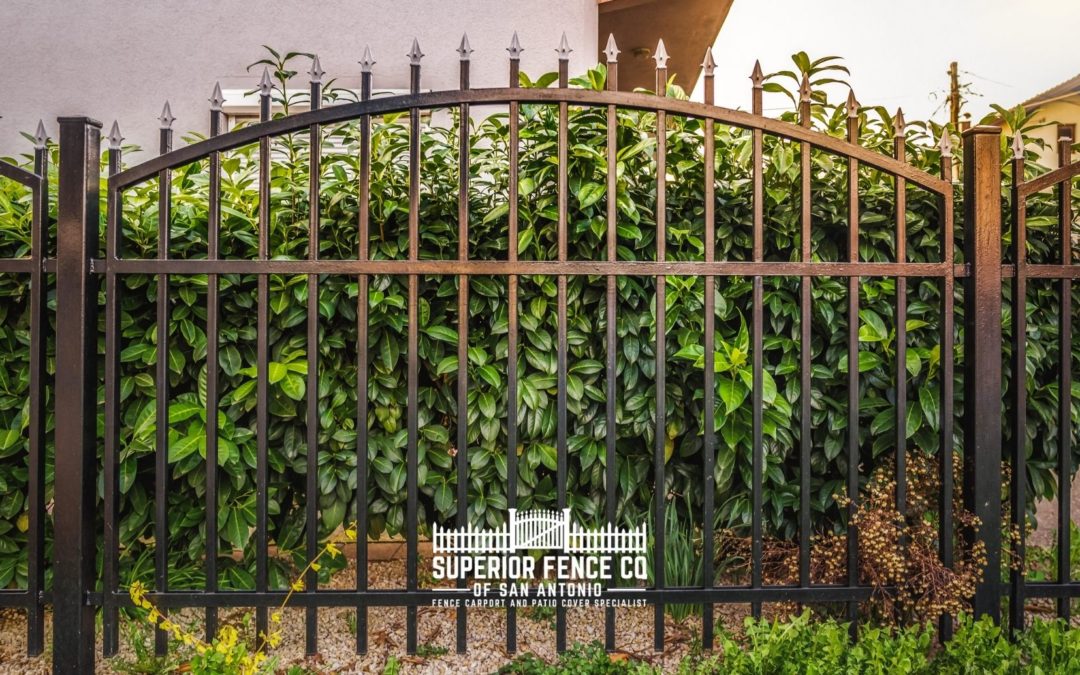All Categories
Featured

As sustainability comes to be an expanding priority for companies and house owners, the demand for environment-friendly building materials extends to exterior rooms, including fencings. Typical fence products such as timber, metal, and plastic can have considerable ecological influences, from logging to chemical treatments and plastic waste.
- Bamboo Fence. Bamboo is just one of the most lasting materials on the market, and it is significantly used in fence building as a result of its fast development and stamina. Unlike wood trees, bamboo is a yard that can grow back totally within just a few years, making it extremely sustainable. It's normally immune to insects and rot, which suggests it does not call for severe chemicals or treatments, making it a green selection.

Advantages: Bamboo fences are resilient, low-maintenance, and naturally degradable. They are normally immune to termites and wetness, lowering the need for chemical preservatives. In addition, bamboo aids lower soil disintegration due to its deep origin systems. Considerations: Bamboo can be much more expensive than some traditional timber secure fencing choices, and it might not appropriate for areas with extreme cool or freezing temperatures, as it can end up being breakable gradually. 2. Recycled Products Fencing. Many suppliers currently offer fences made from post-consumer plastic, recycled timber, or even repurposed steel. Several composite products, for instance, are made from recycled plastic bottles, wood scraps, and other materials that would otherwise be disposed of.
Conveniences: Recycled product fences aid save natural deposits, lower pollution, and lower the environmental effect of the production procedure. They can additionally provide impressive sturdiness, standing up to degeneration, mold, and termites. Considerations: While recycled product fences are extremely durable and environment-friendly, they may not have the same natural visual that some homeowners look for. Nevertheless, suppliers now use designs that simulate the look of timber or stone. 3. Compound Fencing. Compound fencing is made from a blend of wood fibers and plastic, often incorporating recycled materials. This mix produces a very long lasting, low-maintenance fence that does not require routine paint or discoloration, making it a lasting choice. Composite fencings are resistant to rot, insects, and weathering, which implies they can last for many years without the need for regular substitutes.

Benefits: Composite fences are lasting and can stand up to severe weather, minimizing the need for fixings or replacements. Given that composite products commonly include recycled web content, they assist decrease plastic waste. Additionally, they do not need dangerous chemicals or treatments. Considerations: Composite fencings can have a greater ahead of time cost than standard timber or vinyl, though their resilience and reduced upkeep prices typically make them an extra cost-efficient alternative over time. 4. Living Fences. Living fences, likewise referred to as hedgerows, are an environment-friendly and aesthetically pleasing option that entails growing dense hedges, trees, or climbing up plants along your residential property line to produce an all-natural barrier. Popular plants for living fencings consist of boxwood, privet, and holly. These plants can be expanded to give personal privacy, windbreaks, and noise reduction while adding to ecological health and wellness.
Advantages: Living fences promote biodiversity, enhance air high quality, and absorb carbon dioxide, making them among the most eco-friendly fencing alternatives. They additionally provide a natural environment for insects and birds and can lower environmental pollution and aid control temperature levels in your lawn. Factors to consider: Living fences need routine maintenance, such as trimming, watering, and sometimes pest control. They likewise take time to establish and may not offer immediate personal privacy contrasted to solid wood or vinyl fencings. 5. Cedar and Redwood Fence. Cedar and redwood are popular all-natural timber alternatives for fences. These materials are naturally immune and sturdy to rot, insects, and wetness, which indicates they typically do not need making use of damaging chemical treatments. When sourced from sustainably handled woodlands, cedar and redwood fences can be an eco-friendly option that offers both appeal and durability.
Perks: These woods are naturally degradable, sustainable, and offer exceptional toughness and natural elegance. Cedar and redwood also have a reduced ecological impact when harvested sensibly, making them an environmentally friendly selection for lots of homeowners. Factors to consider: While cedar and redwood fences have environmental advantages, they do still call for occasional maintenance and are more pricey than other wood alternatives. It is necessary to make sure that the timber is sourced from lasting forests to maximize its ecological advantages. 6. Rock and Block Secure Fencing (Recovered) Rock and block fencings are extremely resilient and low-maintenance, and they can be green when made from recovered products. Recovered stone and brick are typically restored from old buildings or building tasks, reducing waste and preserving natural deposits. These materials use an ageless look and are very immune to weathering, making them a resilient remedy for fencing.
Perks: Recovered rock and block are durable, cosmetically pleasing, and call for marginal upkeep. By repurposing these materials, you assist decrease the demand for new sources and lower waste in landfills. Considerations: The setup of rock and brick fences can be labor-intensive and more expensive compared to various other materials, however their longevity and low upkeep demands can make them economical in the future. Verdict. Environmentally friendly secure fencing choices are not just great for the environment but likewise provide toughness, low upkeep, and visual appeal. Whether you select bamboo, recycled products, composite fence, living fences, or sustainable timber like cedar and redwood, there are several means to reduce your environmental impact while enhancing your building's appearance. By selecting these eco-conscious materials, you can add to a much healthier earth and develop an outside area that shows your values.
Latest Posts
Explore WyHy FCU – Top Benefits for Members
Published May 25, 25
1 min read
Find Outstanding Car Repair Care in Chicago – Quality Service Today
Published May 24, 25
1 min read
Boost Your Home's Outside with Weathercraft's Home siding Solutions
Published May 23, 25
1 min read